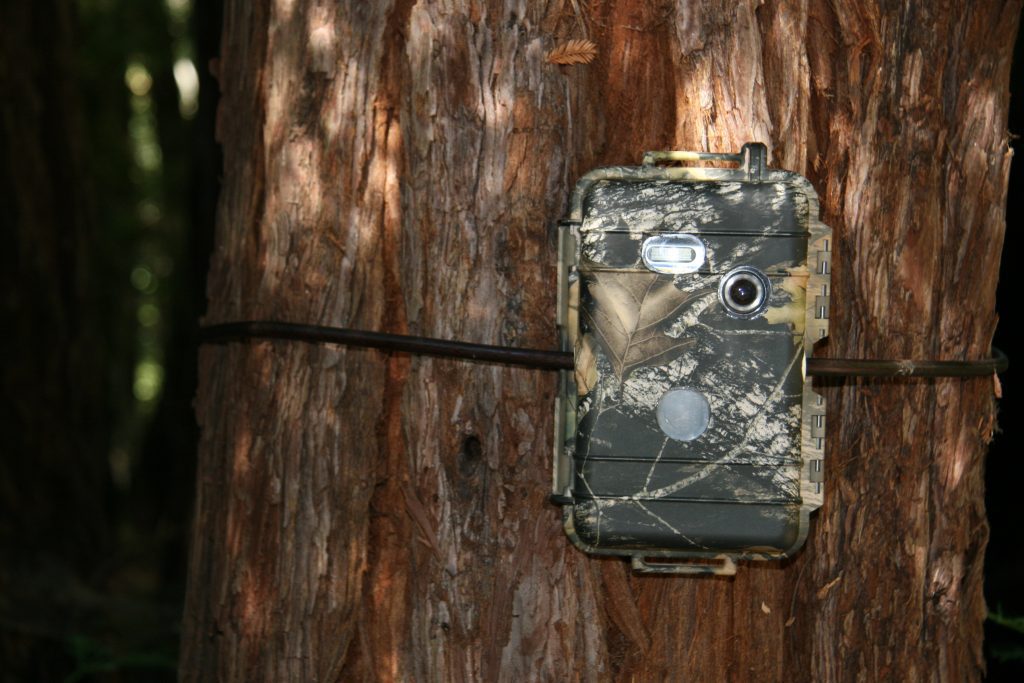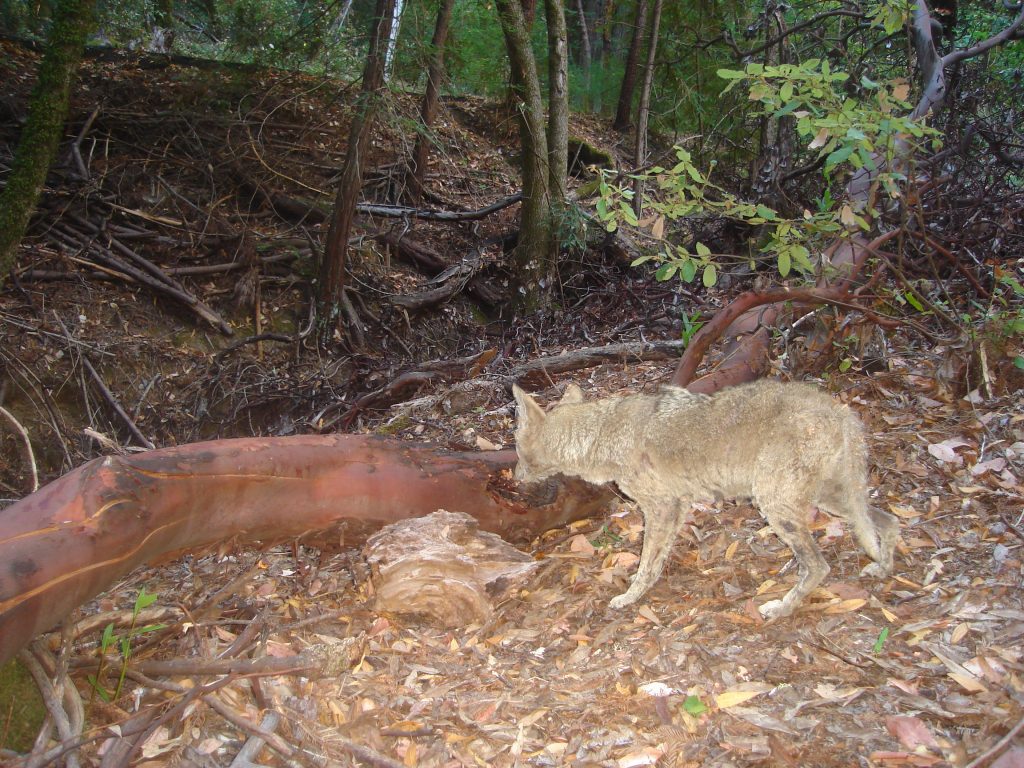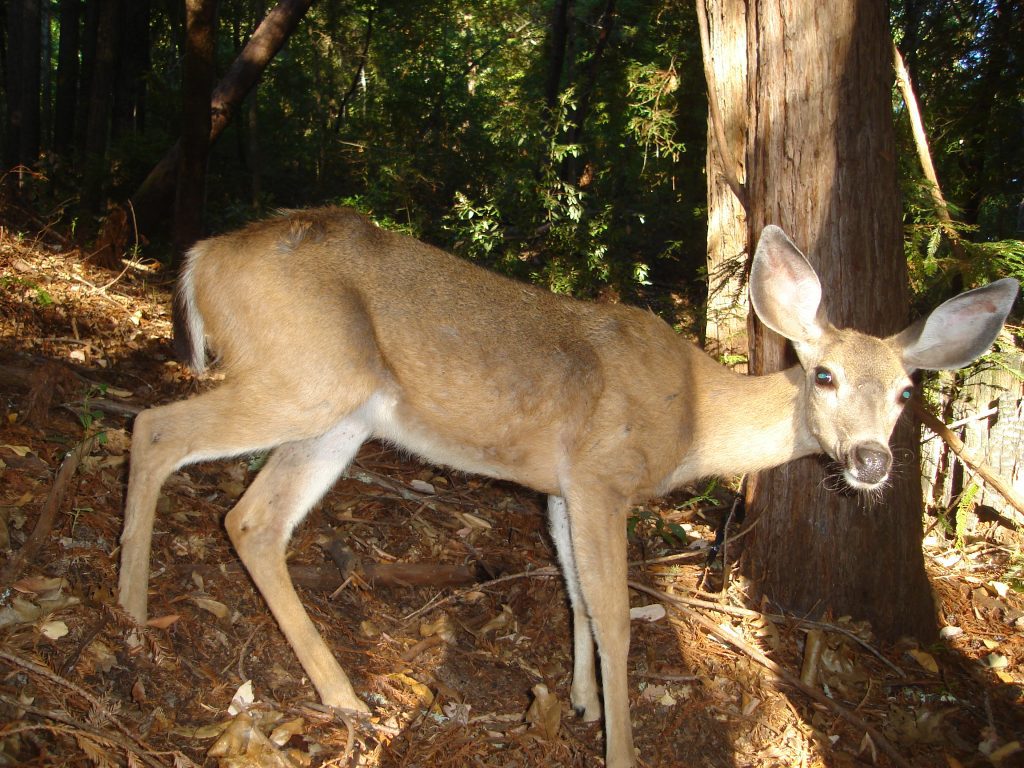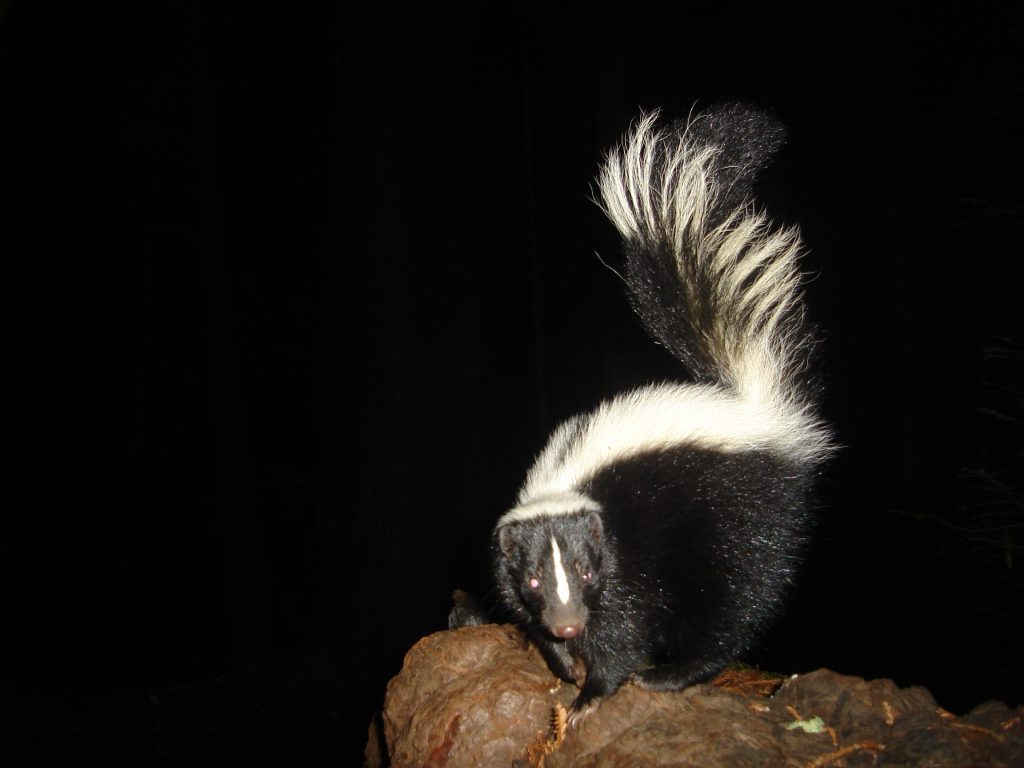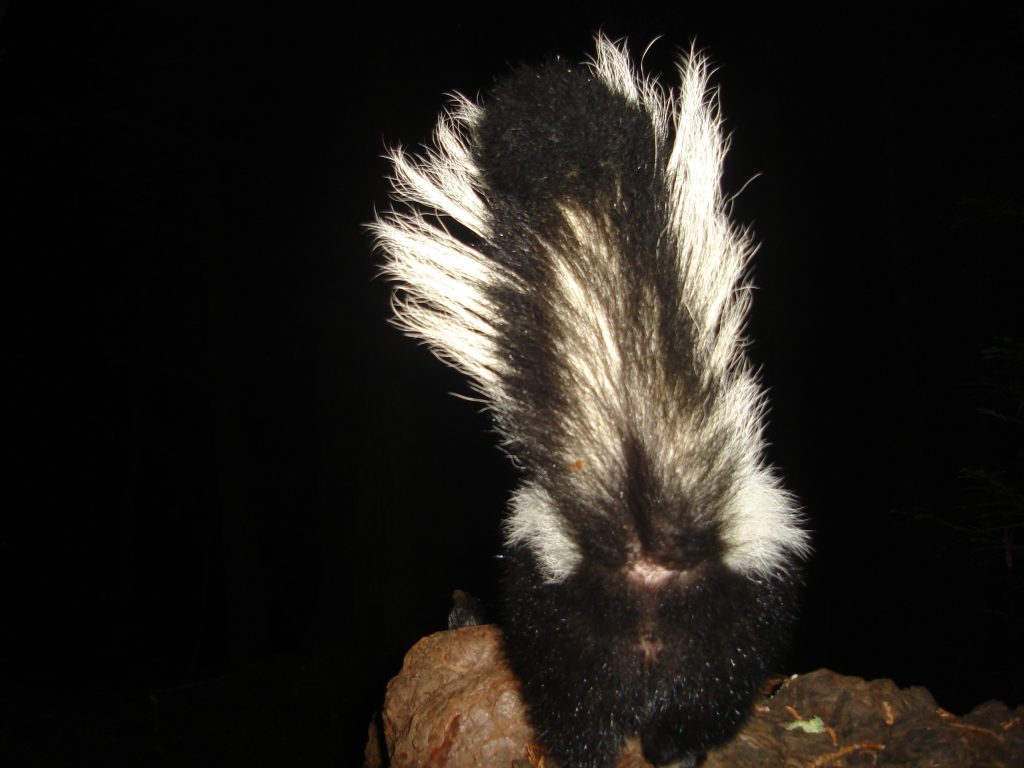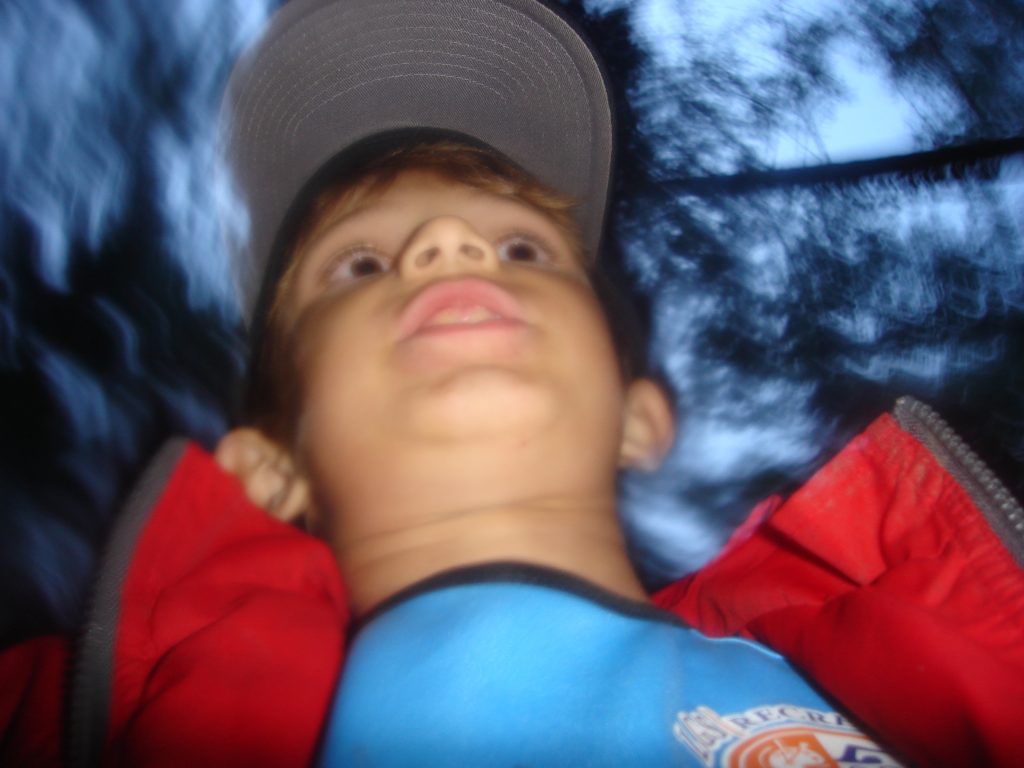In simple terms, a camera trap is a way to see into the secret world of animals without being there when the picture is taken. Historically, camera traps were developed to assist hunters in following their game and provide information when an animal would be at a certain location. Today more and more people (like myself) just enjoy wildlife and want to see animals doing what comes naturally to them. I like to share pictures of animals with my friends and discover what is really walking around in my backyard.
Today’s off-the-shelf camera traps can be purchased at outdoor stores or on-line hunting warehouses. Prices vary depending upon the lens type, picture size, battery requirements and type of flash. Some cameras have a traditional camera flash and others generate a flash that is semi or completely invisible to the human eye. All are triggered by a special infrared sensor and when something moves within the range of the cameras beam, CLICK, a picture is silently recorded. Technology is always changing and some cameras can send photos to a central hub for viewing and downloading. For the common hobbyist who just wants to have fun, the cameras recording media, the card, needs to be removed from the trap and brought to a laptop for downloading and reviewing. Motion-sensor triggered video can also be recorded on camera traps and like all video cameras today, the more expensive cameras record better details and work better in lower light.
Setting up a camera trap may sound simple but the camera person is really setting a stage. The camera can be mounted along a popular game trail or a spot where tracks are commonly seen. CalWILD (formally known as the California Department of Fish and Game) has certain rules for being close to wild animals, even if they are on your own property. No one is allowed to use bait to bring an animal to your camera trap but certain types of scents (smelly things that can be purchased in jars and vials) are allowed. Also allowed are lures that have audio recordings to bring in certain animals. What is not permitted, for example, is to use road kill to set up a camera. Road kill is considered bait and CalWILD wants to keep wild animals wild. You are not allowed to feed wild animals.
I was fortunate enough to find an expert in the camera trapping hobby, a professional who teaches a five-day class through San Francisco State University’s Field Campus in the Sierra Nevada’s, appropriately called, Camera Trapping. Chris Wemmer spent several decades as the head of the Nations Smithsonian Zoo and now he walks the hills, mountains and creeks using his knowledge to camera trap hidden wildlife. At the class I attended there were some students, wildlife researchers, some photographers, a couple retired folks and even a few mothers who wanted to create new ways to explore nature with their children.
Since my wife and I do not have any children of our own, I have been taking the next-door neighbors seven-year-old son out to set up my camera trap. Our first set was a lot of work, trying to figure out the best spot. I wanted it to be his location, not where I knew animals would walk by. Much to our good fortune, our first camera set produced a wandering coyote. This kid is a natural! We went out again over the holiday and set up the camera, this time with a long trail and potential to see animals walking up the hill. Our camera trap is out there, waiting, patiently working when we are not, day and night. On our way back we talked of Lego building and video games, something that I do not know very much about, but that is the subject for my next story. . .

